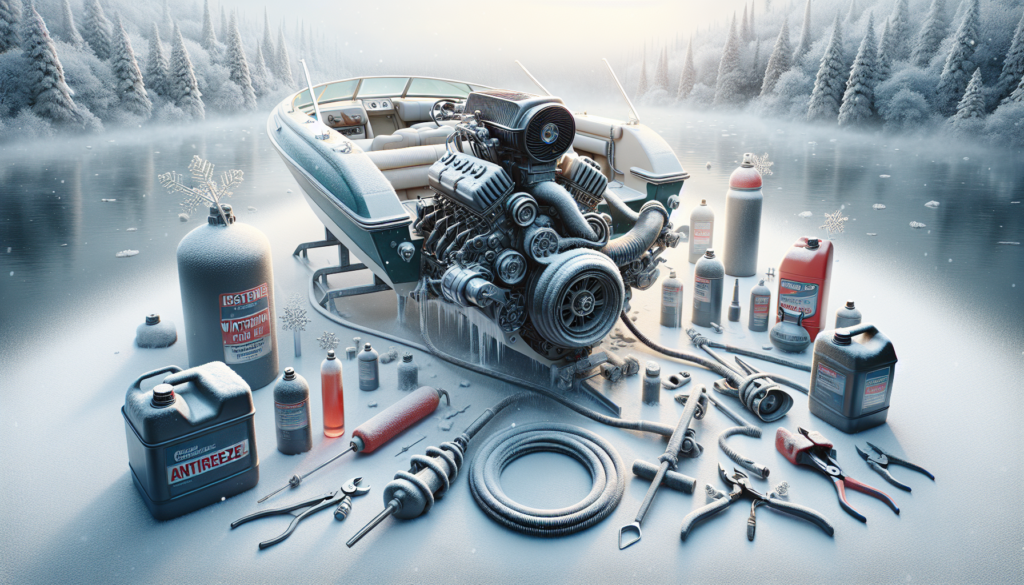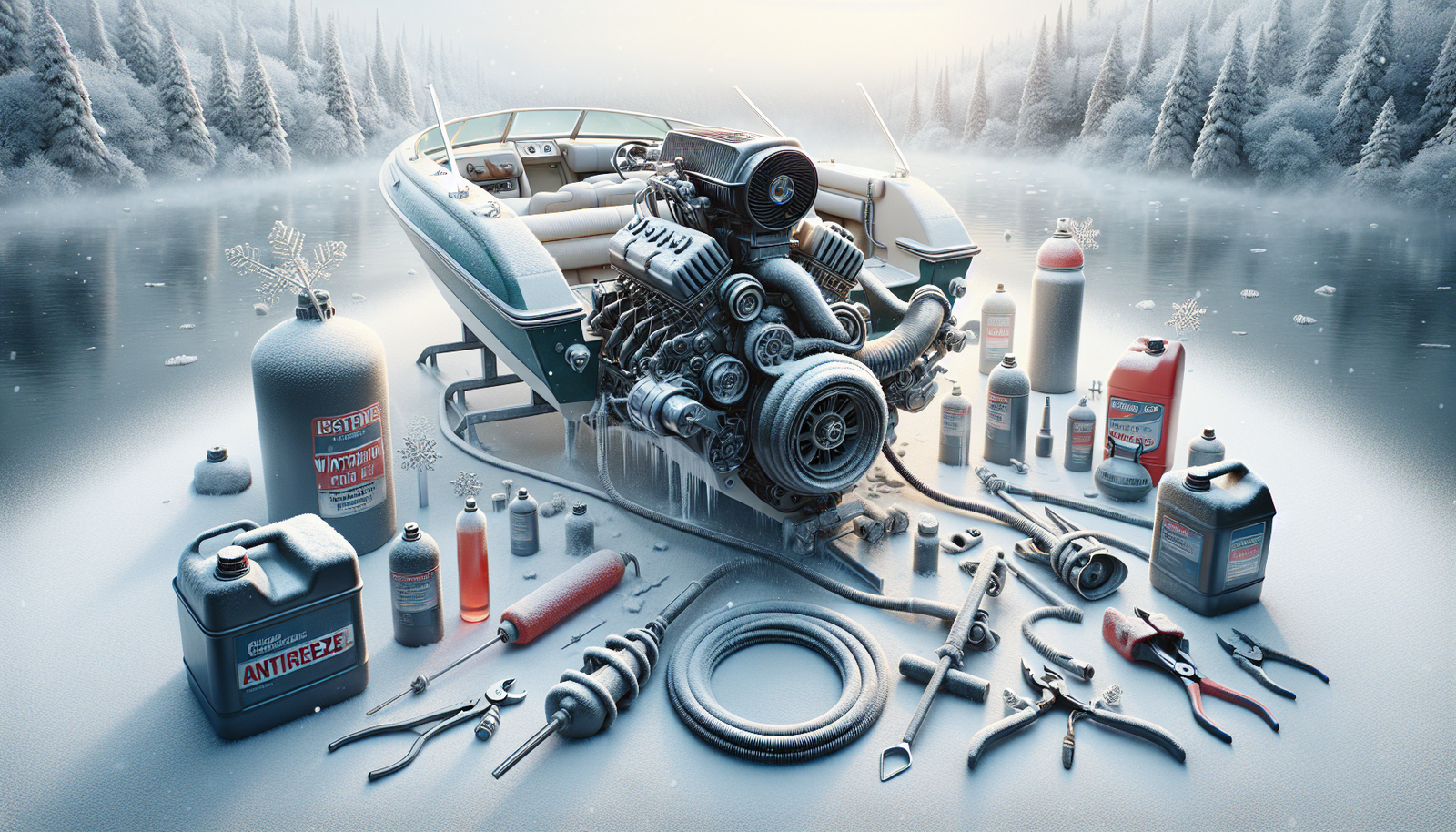As the chill of winter is fast approaching, it’s time to think about preparing your boat engine for the cold. This is an often overlooked but vitally important step in boat maintenance that ensures your vessel will be ready to roar to life when springtime rolls around. The “Best Ways To Winterize Your Boat Engine” will guide you through the process of proper winterization, with tips and tricks to ensure you don’t miss a step. This practical advice is the result of years of experience and will save you time, money, and potential heartache down the line.

Understanding the Importance of Winterizing Your Boat Engine
When the pleasant, warm days of cruising on the tranquil waters transition into the icy cold months of winter, it becomes absolutely crucial for you to winterize your boat engine. But why is it so important? What would happen if you decide to skip the process? And what are the long-term benefits?
Reasons to Winterize Your Engine
The primary reason to winterize your boat engine is to protect it from the harsh weather conditions of winter. Cold temperatures can cause fuel to degrade, leading to sedimentation that can clog up your fuel lines. The water used for cooling your engine can also freeze, causing damage to the engine’s components.
Potential Damage from Neglect
If neglected, your boat’s engine can potentially suffer from several issues. The stagnant water inside the engine could freeze, expanding and causing cracks in the engine block or manifold. Such damage is often expensive to repair and could render your engine useless.
Long-term Benefit of Engine Maintenance
Winterizing your boat engine is more than just preparing for the harsh winter temperature. It is part of a long-term maintenance strategy that can help ensure the engine’s proper functionality for years to come. Regularly winterizing your engine can improve performance, save on repair costs, and extend the life expectancies of the engine and boat.
Getting Prepared for the Winterizing Process
Winter closing your boat engine requires planning, preparation and the right tools. It’s also critical to consider safety measures and familiarize yourself with your boat’s unique specifications.
Tools and Materials needed
Winterizing a boat engine requires a few essential tools such as fuel stabilizer, a motor flusher, an oil extractor pump, fresh oil, new oil filters, antifreeze, spare batteries, and marine fogging oil. Having all the necessary accessories will make the process much more comfortable and streamlined.
Safety Measures to consider
Safety is paramount when winterizing your engine. Always wear suitable protective clothing, such as gloves, goggles, and potentially a respirator. Keep your work area ventilated to prevent build-up of harmful fumes. Lastly, ensure your boat is secure and stable before you start to prevent unwanted injuries.
Getting Familiar with Your Boat’s Spec
Every boat model is a bit different, so it pays to understand your boat’s requirements. You should review your boat’s manual before starting the winterizing process. The manual could offer specific guidelines and precautions for your boat model, which could prove invaluable during the winterization process.
Fuel System Preparation
A well-maintained fuel system is pivotal in maintaining a healthy engine during winters. Let’s explore why this is so crucial and how to achieve it.
Importance of addressing the fuel system
The fuel system is an integral component of your boat engine. If left untreated, sediment formation, condensation, and biological growth can occur, leading to corrosion and blockages. Therefore, preparing the fuel system for winter is critical in maintaining a smoothly operating engine.
Steps for proper fuel system winterizing
Firstly, you should fill up the fuel tank, which can prevent condensation from forming. Then apply a fuel stabilizer to keep the fuel fresh. Finally, run the engine for a while. This ensures the stabilized fuel cycles through the entire system, reaching the engine’s various components.
The role of fuel stabilizers and how to use them
Fuel stabilizers prevent fuel from degrading during winter, thus inhibiting sediment formation and biological growth. Following the manufacturer’s instructions, add the right amount of stabilizer to a full tank of fuel and run the engine to ensure the stabilized fuel reaches the entire system.

Oil Change: Critical Element in Engine Winterization
Changing the oil is a crucial part of preparing your boat engine for winter. But when is the right time to do it, and what type of oil should you use?
Importance of Changing the Oil
Changing the oil before the onset of winter aids in removing any contaminants and impurities. It further ensures that the engine has clean oil throughout the frigid months, preventing corrosion and internal damage.
Right time and pattern for Oil Change
You should change the oil after the last run of the season, once your engine is warm but not hot. Run the oil extraction pump to remove the old oil, then replace the old oil filter, and refill with new oil, checking the dipstick to avoid overfilling.
Choosing the Right Oil
Your boat’s manual should suggest the right kind of oil for the engine. However, in general, a 15W-40 weight oil is recommended for marine diesel engines and a 5W-30 for gasoline engines. Always use marine grade oil if possible.
Draining and Protecting the Cooling System
During winter, any residual water in your boat engine’s cooling system can freeze and cause damage. Thus, draining and protecting it with antifreeze becomes crucial.
Necessity of Draining the Cooling System
Draining the cooling system reduces the risk of engine damage due to freezing. Water inside the engine block, risers and manifolds can freeze and expand during cold winter periods, leading to costly damage such as cracked blocks or broken pistons.
Proper way to reflux the system
After draining the existing water, you need to replace it with marine antifreeze. Attach a motor flusher to your engine’s water intakes and feed it with antifreeze. Then, run the engine briefly to distribute the antifreeze throughout the entire cooling system.
Choosing suitable antifreeze for a boat engine
When choosing an antifreeze for your engine, you must opt for a marine-grade variant. The antifreeze used for automobiles can be harmful to marine life. Select an antifreeze specially formulated for marine engines, preferably propylene glycol-based due to its better heat transfer capabilities and less toxic nature.
Battery Maintenance and Storage
Winter can be harsh on boat batteries, so it is essential to disconnect, store carefully and maintain them correctly.
The need for Battery Disconnection
Batteries can slowly discharge over time, especially in colder temperatures. Disconnecting the battery helps to prevent unnecessary power drainage. Moreover, it keeps the battery safe from electrical shorts which could potentially occur during winter storage.
Useful Tips for Battery Storage
When storing your boat battery, keep it in a cool, dry place. Use a trickle charger to maintain the battery’s charge and extend its life. Regularly check the battery’s voltage to ensure it does not drop too low, as that could impair the battery’s long-term performance.
Maximizing the battery life during winter
To maximize battery life, clean the battery terminals and spray them with anti-corrosion solution. If yours is a sealed battery, all you need to do is keep it charged. For a conventional wet-cell battery, ensure the water levels are correct before recharging.
Caring for the Bilge and the Bilge Pump
The bilge and bilge pump should not be overlooked when winterizing your boat engine. These two can accumulate dirt and debris, which can cause malfunctions.
Cleaning the Bilge
Ensuring a clean bilge in winter prevents unpleasant odors and the build-up of harmful substances. Use a marine-grade bilge cleaner to clean it thoroughly.
Keeping the Pump in Good Shape
The bilge pump is crucial in keeping your boat dry and afloat. Make sure it’s in proper working condition before winter storage. Test it, clean it and replace it if necessary.
Antifreeze applications for the bilge
After cleaning, dry the bilge as much as possible. However, if you can’t get it absolutely dry, add a small amount of antifreeze to prevent any remaining water from freezing and causing damage.
Taking Care of Exhaust Manifolds and Elbows
Don’t overlook the exhaust manifolds and elbows as well during winterization, as these areas can also suffer freezing damage.
Recognizing importance of exhaust manifold and elbows care
Exhaust manifolds and elbow parts can hold water that can freeze and crack these parts. Ensuring these areas are free from water before winter storage is an essential step in preventing significant repair costs.
How to prevent freezing damage
The best way to prevent freezing damage is to drain water out of the components thoroughly. Use drain plugs for this purpose. Also, consider applying antifreeze within these regions for extra protection.
The right antifreeze for exhaust manifolds and elbows
You should use the same antifreeze for the exhaust manifolds and elbows as you used for the engine cooling system. It should be a marine-grade, non-toxic variant to ensure compatibility and protection.
Sealing and Fogging the Engine
Sealing and fogging your engine is the final step in the winterization process. It includes spraying a mist of oil into the carburetor and spark plug holes to prevent corrosion.
Purpose of engine sealing
Sealing the engine with fogging oil helps to form a layer of protection against moisture and prevents internal engine corrosion during the winter period.
How to effectively fog a boat engine
To fog your boat engine, remove the spark plug wires and the spark plugs. Spray fogging oil into each spark plug hole for a few seconds. Finally, turn over the engine briefly to distribute the oil and then replace the plugs and wires.
Choosing the ideal fogging oil
Make sure to choose a fogging oil that is suitable for your specific type of engine. Check the owner’s manual to see any specific recommendations. It is best to select a fogging oil that protects against rust, corrosion, and moisture.
Regular Check-ups During Winter
Even if you’ve prepared and winterized your boat engine flawlessly, it still needs regular check-ups during the winter off-season. Let’s look at how frequent these checks need to be and what you should look out for.
Frequency of check-ups
You should aim to check your boat engine every 4-6 weeks during winter. This check-up can help to catch any developing issues early and keep the winterization process on track.
Things to inspect during a check-up
When checking your boat, start with visually inspecting for any leaks or condensation. Check the battery’s voltage, as well as the state of the bilge and bilge pump. Also, take a peek at the antifreeze levels in your cooling system.
Troubleshooting common issues
Common winter storage issues can include a dead battery, leaks or frozen areas in the engine or fuel system. Addressing these as early as possible is key to preventing more significant problems down the line.
In conclusion, winterizing your boat is an essential practice that can save you lots of time and money in the long run. It might take some effort, but ensuring your boat weathers the winter well is a rewarding endeavor when you’re ready to hit the water again next season.


[…] your boat engine. If you want your boat to keep running smoothly come the springtime, taking a few steps to winterize your engine can be a game […]
[…] Proper off-season storage protects your engine from damage due to inactivity. This involves steps like filling the fuel tank to prevent contamination and adding fuel stabilizer, amongst others. […]